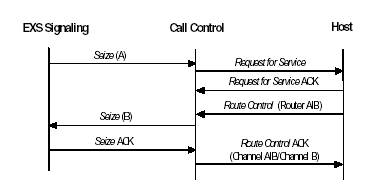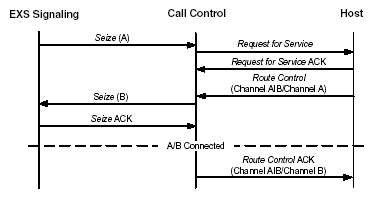
You are here: CSP Developer’s Guide: Overview > 11 Call Routing > Call Routing Call Flows

The call flow diagrams that follow illustrate the two scenarios of host-initiated routing: Outseize Only and Outseize and Connect.
In Outseize Only scenarios, the router selects a channel, which is then seized. The CSP performs no further call setup.

In Outseize and Connect scenarios, the router selects a channel, which is seized and then connected to the specified channel.

Outseize Modes for Host-Initiated Routing
You can use PPL Config Byte 20 to configure two outseize modes:
• Call Service Request (0x00)
This mode is the default. The CSP seizes the terminating channel, but takes no further action. This mode is usually used for terminating calls to a VRU or subscriber.
• Outseize (0x01)
The terminating channel is seized and digits or other information may be outpulsed. This mode is usually used when initiating or relaying a call.
You must configure outseize instructions for the channel and the Route Control message must contain digits and any other information required for outseizing, as noted in the message description format.
If the Outseize Mode is set to Outseize (0x01), PPL Config Byte 8 indicates the outpulse signal type. MFR1 is the default. (Host does not send KP ST) (0x02).
0x01 - DTMF
0x02 - MFR1 (Host does not send KP ST)
0x03 - MFR2
0x04 - MFR1 (Host sends KP ST)
0x05 - Dial Pulse